The Final Flight of Extortion 17
It was the deadliest helicopter crash in the history of U.S. special operations. Why did it happen?
:focal(497x184:498x185)/https://tf-cmsv2-smithsonianmag-media.s3.amazonaws.com/filer/b3/94/b3941765-7202-459c-95be-aca3119b204f/darack_1.jpg)
A few minutes past 2 a.m. on August 6, 2011, at a dusty forward operating base 40 miles south of Kabul, Afghanistan, the rotors of two U.S. Army CH-47D Chinooks began to turn. Operating with no lights save for the faint green glow of night vision goggles and cockpit instrument panels, the two helicopters, call signs Extortion 17 (“one-seven”) and Extortion 16, lifted into the darkness and accelerated toward a destination less than 20 miles west.
Extortion 17 and its 38 occupants would not return. A Taliban fighter shot the helicopter out of the sky with a rocket-propelled grenade and all aboard were killed—the single greatest loss of American life in the Afghan war. Those killed ranked among the world’s most highly trained and experienced commandos, including 15 men from Gold Squadron of the Naval Special Warfare Development Group, popularly called SEAL Team 6. Just three months earlier, members of a counterpart SEAL Team 6 squadron successfully raided a compound in Abbottabad, Pakistan, and killed Osama bin Laden. In light of that raid’s success, the shootdown of Extortion 17 incited a flurry of conspiracy theories: The Taliban were tipped off; it was a trap; it was retribution for the killing. No evidence has emerged to support any of these claims. Instead, two rigorous U. S. military investigations followed every moment of the mission to determine what went wrong on Extortion 17’s final flight.
The mission had begun about four hours prior to the shootdown, when the two helicopters touched down side by side in Juy Zarin, a village in the bare rock-walled Tangi Valley of Wardak Province. As two U.S. Army AH-64 Apache attack helicopters, an Air Force AC-130 gunship, and a small fleet of unmanned surveillance aircraft orbited overhead, a platoon of the 75th Ranger Regiment and members of an Afghan special operations unit stormed down the rear ramps of the Chinooks and into the night. Their target: an Afghan named Qari Tahir and his group of fighters. Intelligence had revealed Tahir to be the senior Taliban chief of the Tangi Valley region, with probable ties to upper-echelon Taliban leadership in Pakistan. As the ground assault force rushed toward Tahir’s compound, Extortion 17 and 16 sped back to base, where they were refueled, and awaited word to extract the team, evacuate wounded, or race reinforcing troops to Juy Zarin.
When the two Chinooks had first touched down in the village, a group of eight fighters armed with AK-47 rifles and RPG-7 rocket-propelled grenade launchers bolted from the compound. One AH-64 crew, after identifying the men as enemy combatants, fired on them with their gunship’s 30mm cannon, killing six. The remaining two fighters ducked into a stand of trees and disappeared from the Apaches’ infrared scanners. Three hours after disembarking from the Chinooks, the assault force had secured the compound and detained a number of Tahir’s men, but they hadn’t found Tahir himself. Through sensors on manned and unmanned aircraft, U.S. forces observing the mud walls and terraces of the village saw new groups of fighters gathering and maneuvering. Mission commanders, believing that Tahir was likely among one of the groups, deployed an Immediate Reaction Force (IRF) to interdict them while the Rangers held the compound. Planners then chose a new landing zone for the IRF, but it was large enough to accommodate only one Chinook.
Faced with the possibility of confronting nine or 10 Taliban fighters, planners increased the reinforcement team from 17 to 32 men, formed around the 15-man SEAL group. The IRF also included two SEALs from another team, five Navy special operations support personnel, three Air Force special tactics airmen, seven Afghan National Army commandos, a translator, and a combat assault dog. The IRF commander then made a critical decision: In order to get everyone on the ground as quickly as possible and deny the Taliban time to react, he ordered the entire force to fly in Extortion 17. Extortion 16 flew empty.
Commanders frequently request CH-47 Chinooks to insert troops. The helicopters are capacious and fast, and they can perform well in Afghanistan’s performance-degrading high altitudes and heat. U.S. Special Operations Command possesses its own specialized Chinooks—MH-47s—flown by the ultra-secretive 160th Special Operations Aviation Regiment, the “Night Stalkers.” The MH-47s’ modifications include inflight refueling probes, additional and upgraded sensors, more powerful engines, and more powerful defensive weapons than their conventional counterparts. Night Stalker pilots and crew rigorously train for nighttime raids, like the one in Juy Zarin.
Extortion 17 and 16 weren’t MH-47s and their crews were not Night Stalkers. The mission was flown by conventional pilots flying unmodified CH-47Ds. “It’s a math problem. There are more operations than can be supported by the 160th at any given time,” says Major Matthew Brady, a former 160th pilot and company commander.
The pilots and crew of Extortion 17, however, had ideal experience and abilities for the mission that night. At the flight controls were David R. Carter of the Colorado Army National Guard and copilot Bryan J. Nichols, a Kansas-based Army reservist. Nichols had deployed three times to combat zones, and Carter, with more than 4,000 hours of flight time, was one of the most experienced helicopter pilots in the U.S. military. He was also an instructor at the High Altitude Army National Guard Aviation Training Site (see “Triple Threat: High, Hot, and Heavy,” Aug. 2014), where many U.S. and foreign helicopter pilots train for mountainous and high-altitude flying, often before deployment to Afghanistan.
During a previous deployment to Iraq, Carter’s unit flew dozens of similar raids, which he often planned and led, and gained a reputation for working well with special operations troops. “Our area of operation was the entire country of Iraq, and every mission was at night,” says David “Pat” Gates, a pilot with Carter’s unit , the 2nd Battalion, 135th Aviation Regiment (2-135th), a Colorado Army National Guard unit based in Aurora, Colorado. “We were on goggles the whole time. We were supporting special operations, but not to the degree of the 160th. We didn’t do fast-rope inserts, building insertions, or anything like that.” Subsequent to their Iraq deployment, the unit flew the SEALs of Team 6 on practice raids around Fort Carson, Colorado, and during nighttime urban training in Denver, further cementing the 2-135th’s reputation with special operations units. At the time of the Juy Zarin raid, the battalion had been flying in Afghanistan for about two weeks.
Flying to the Tangi Valley for the second time, Extortion 17 and 16 took a different route, approaching from the northwest instead of the south. Six minutes from their estimated landing time, Extortion 16 broke away from the lead Chinook and orbited at a location close enough to help if needed. Extortion 17 sped alone toward the landing zone.
For helicopter crews in Afghanistan, the most dangerous times are landing and taking off. Approaching to land or having just taken off, the craft is flying slow and low, so it presents a tempting target. But even a precisely aimed shot fired from an unguided weapon by a seasoned fighter is subject to the ballistics-altering whims of atmospheric variation, subtle and undetected flaws in launcher or projectile, and uncontrollable environmental factors such as wind gusts, large temperature variations, or even particulates in the air.
“There are a lot of bullets out there that say ‘To whom it may concern,’ ”says Major Doug Glover, a U.S. Marine F/A-18D weapons and sensors operator who was a senior watch officer for the Marine air operations center in southern Afghanistan. “The RPG is not a laser. It does not fly in a straight line, and there is no way to know what exact path it will take—just a fairly good idea of its trajectory.”
Sometimes the enemy succeeds in delivering one of these “To whom it may concern” projectiles. In July 2010, an RPG-wielding fighter put a round into the tail boom of a Marine AH-1W Super Cobra, downing it and killing both pilots. In June 2005, a rocket-propelled grenade connected with the rear transmission of a 160th MH-47E Chinook as it attempted to come to a hover, downing it; all 16 on board were killed. In March 2002, two MH-47s were downed by machine gun and rocket-propelled grenade fire while close to ground level. “What we saw is that if the enemy knew where you were going to attack, they would back some guys with RPGs off 500 meters or so, to shoot during an ingress,” Glover explains.
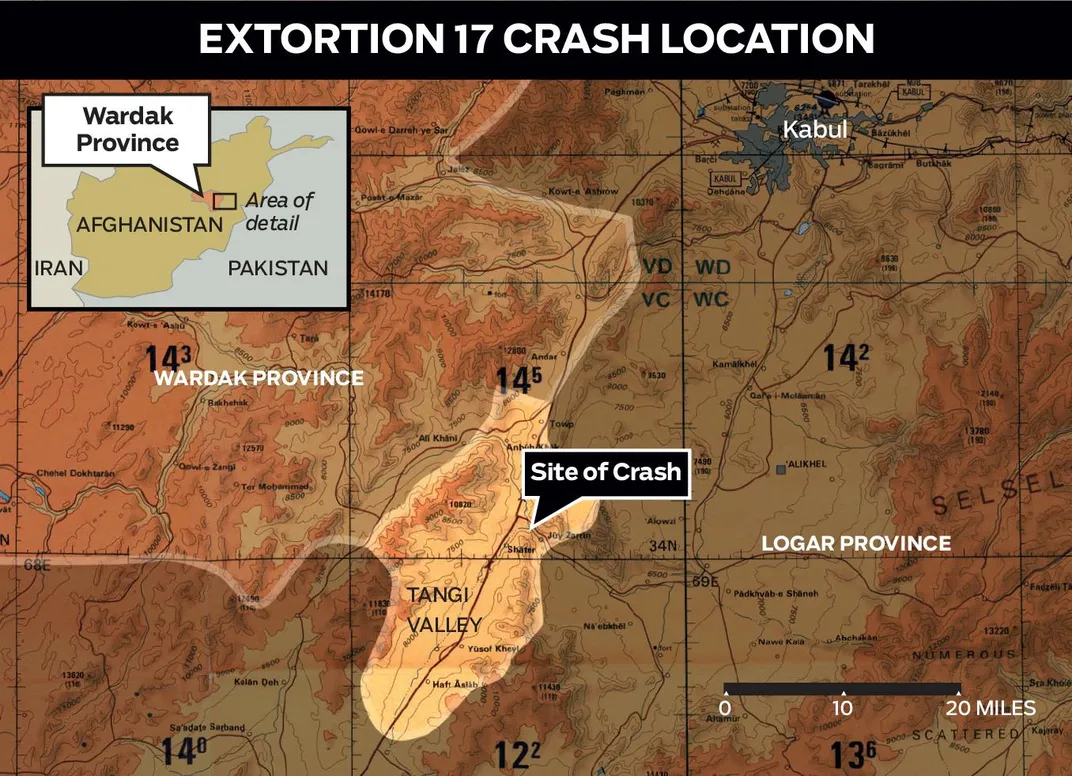
Now deep in the Tangi Valley, their night vision goggles showing the world around them in greenish hues, the IRF team members readied to hit the ground running as the pilots slowed Extortion 17 and descended toward the village. At 2:36 a.m., Extortion 17 requested an infrared spotlight, visible only through night vision goggles, to illuminate the landing zone. The crew of Slasher 02, the AC-130 circling above, flipped the switch on their powerful light. “Burn is on,” they radioed. Through the goggles, the landing zone shone brilliantly. Carter and Nichols continued the descent. “LZ is ice,” transmitted one of the Rangers on the ground, indicating the landing zone was free of enemy activity.
Seconds later, with the Chinook just over 100 feet off the ground and traveling at 58 mph, two or three previously unseen fighters emerged from the tower of a two-story building roughly 220 yards south of the helicopter, shouldering RPG launchers. They may have seen Extortion 17 and its landing zone through their own night vision goggles or simply aimed by sound alone. Two fired at roughly the same time. The first round sailed past the helicopter. The second slammed into one of the Chinook’s rear rotor blades and exploded, severing 10 feet of it. The torque of the spinning rotor assembly, now catastrophically imbalanced, ripped the rear pylon off the Chinook’s fuselage. The forward rotor system then tore off, stressed by the imbalance and the strain of carrying what would normally be a shared load. Less than five seconds after the RPG round hit, the helicopter spun uncontrollably, plummeting into a dry creek bed and erupting in a ball of fire that killed all on board.
The United States military continually works to improve protection for transport helicopters and their occupants, according to Glover and Brady. One of the most significant tactical evolutions of the Afghanistan conflict is the ever-heavier use of unmanned aerial systems and other airborne intelligence-gathering systems. Capable of loitering overhead for hours undetected, small fleets of unmanned craft passed imagery to mission planners before and during the raid at Juy Zarin, allowing them to recognize individual fighters, learn their habits, pinpoint where they slept, and identify the types of weapons they carried.
But U.S. forces didn’t know about every fighter during the raid, and they lost track of at least two—one of whom fired the deadly shot. Since the shootdown of Extortion 17, the military has continued to gain vital experience and equipment to enable an ever greater understanding of an enemy force, aiming to know every combatant and potential combatant and his weapon system before a raid. According to Glover, improved systems in place enable U.S. forces to monitor a target for days or even weeks prior to an operation, so they theoretically will know of even well-hidden potential RPG shooters throughout a village before transport helicopters first touch down.
The military has worked diligently to more tightly integrate gunship escorts with transport craft, according to Brady. While classification veils the specifics of these tactics, particularly for special operations raids, manned gunships can detect potential threats through a range of sensors and immediately attack if needed. Another tactic sometimes employed by gunships, according to Glover, is a show of force, in which pilots and crew fire into an empty field or stand of trees just before a transport helicopter prepares to land, using the sound of a gun alone to keep enemy heads down and fingers off triggers.
The two military investigations, one conducted by United States Central Command and one by the multi-service Joint Combat Assessment Team, pored over the details of the crash with excruciating focus and concluded that no planners or participants bore any fault regarding the circumstances leading to the shootdown of Extortion 17. Though both noted that airborne sensor coverage and closer AH-64 gunship escort should be considered in future operations, nothing could have kept the shooters from firing their RPGs that night. The Joint Combat Assessment Team report further noted that despite a robust deck of intelligence, surveillance, and reconnaissance assets, none identified the location from which the shooters fired prior to the helicopter downing.
The shooters’ origin remains a mystery. The two may have been those who escaped Apache cannon fire, or they may have split away from either of the groups that formed after the start of the raid. The duo may also have had no ties to Tahir or any of his suspected fighters, and attacked the helicopter on their own. Should the Apache pilots have fired into the stand of trees after the two fighters ducked out of sight? Should the Apaches, or the AC-130 overhead, have fired upon the groups of suspected Taliban that gathered in the village after the raid began?
Restrained by strict rules of engagement in force at the time, the helicopter crews could not have fired without a strong indication of hostile intent. Afghanistan has long been a counter-insurgency campaign: The United States’ strategy has been to win Afghan trust through cooperation and aid. Having studied and directly observed the counter-insurgency campaign in Afghanistan, I’ve watched commanders and individual American troops consistently lean far to the side of restraint to encourage Afghans to side with American interests long after U.S. forces have left. Because unarmed villagers, unaffiliated with the Taliban, could also have been in those trees and among the groups milling about the village, the gunships could not have fired. Following a “scorched earth” tactic may have killed the two shooters—and possibly a greater number of innocents—prior to Extortion 17’s return that night, but counterinsurgency doctrine dictates that such tactics lead to potentially far worse long-term consequences.
With a keen understanding of the propaganda value of downing Coalition helicopters, the Taliban single them out as targets. Classified reports, published by Wikileaks, teem with notes from pilots and crew of all types of military helicopters who saw RPG attacks throughout the war. According to one Army report, in the three months prior to the Juy Zarin raid, as many as 17 RPGs were fired at helicopters over Wardak and Logar provinces, a relatively small part of the country. And while all military helicopters carry countermeasures for guided missiles, nothing can interdict the dumb luck of an unguided RPG round sailing through the air. The vast majority miss. “Chance is still part of the battlefield,” says Brady. “For every one that gets lucky, there are hundreds, even thousands, that zip by you.”
“As we’ve seen a number of times, there’s a point that a lucky shot is going to get you and there is only so much you can do to mitigate it,” says Glover, the Marine aviator. “To remove the risk of rocket-propelled grenades downing helicopters in Afghanistan 100 percent, you’d have to remove the opposable thumbs of every fighting-age male in the objective area, and that’s not how we win a counter-insurgency.”
/https://tf-cmsv2-smithsonianmag-media.s3.amazonaws.com/accounts/headshot/ED_DARACK.jpg)
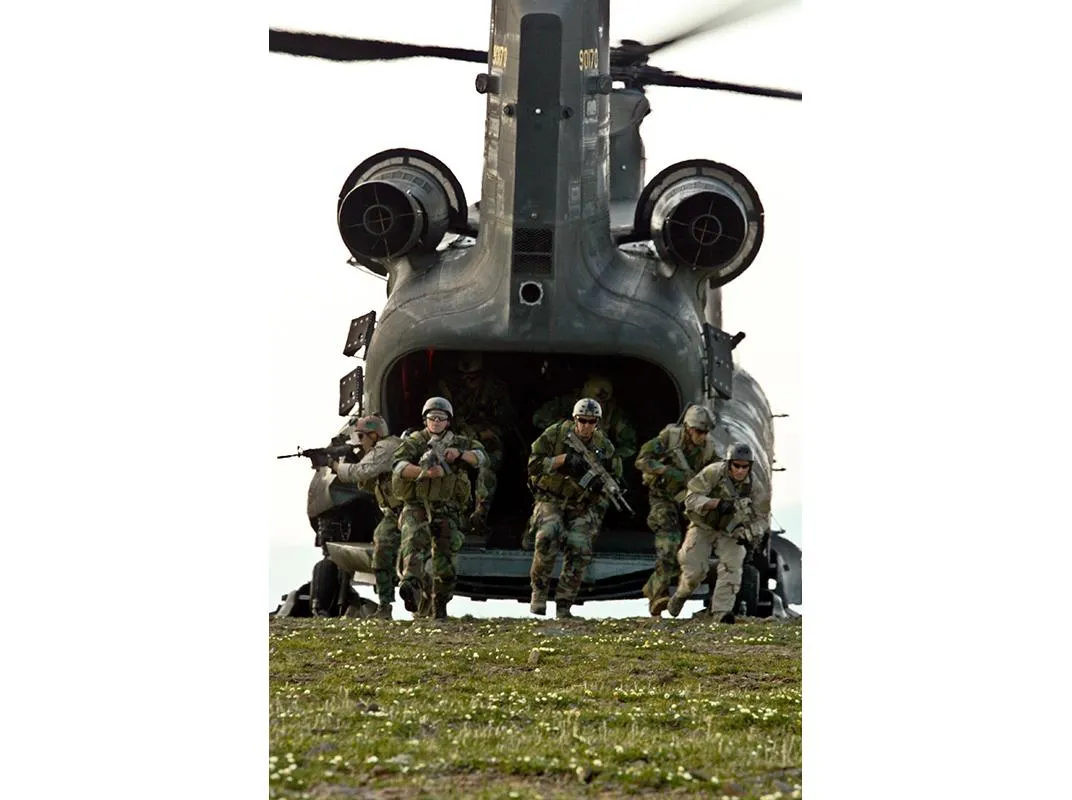

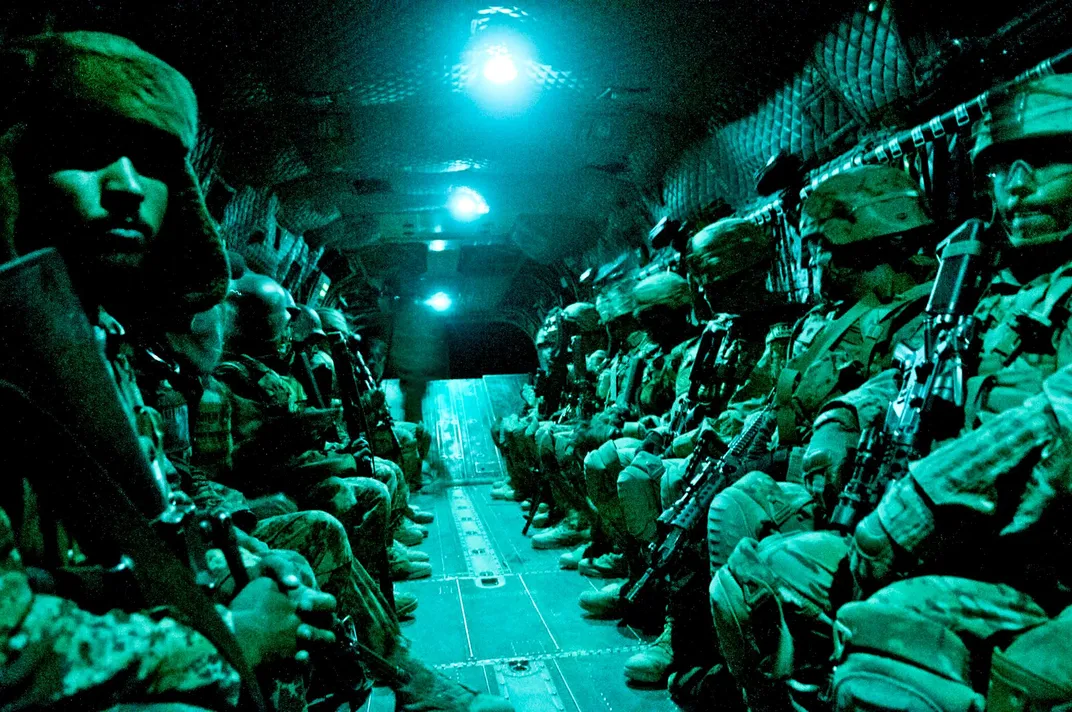
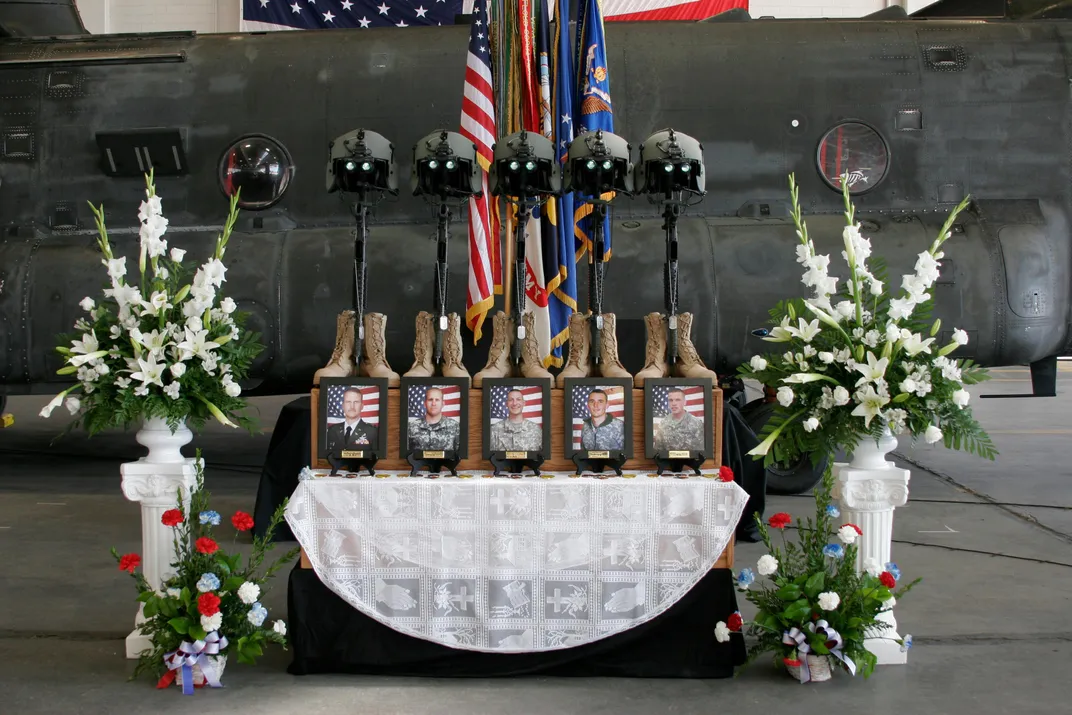
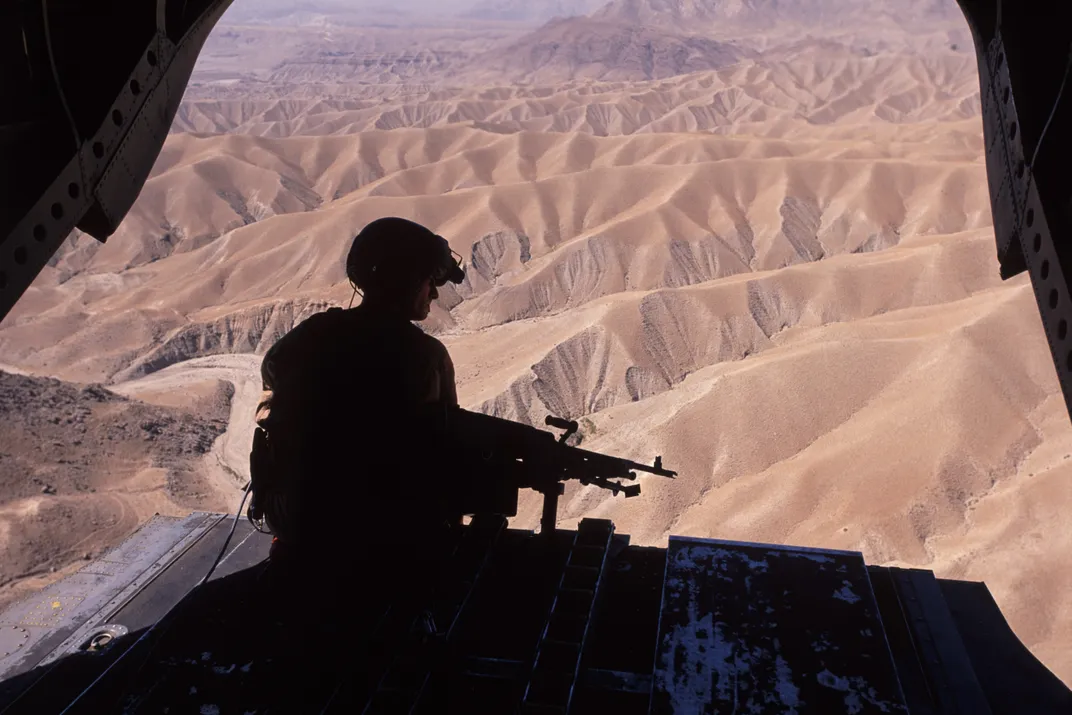
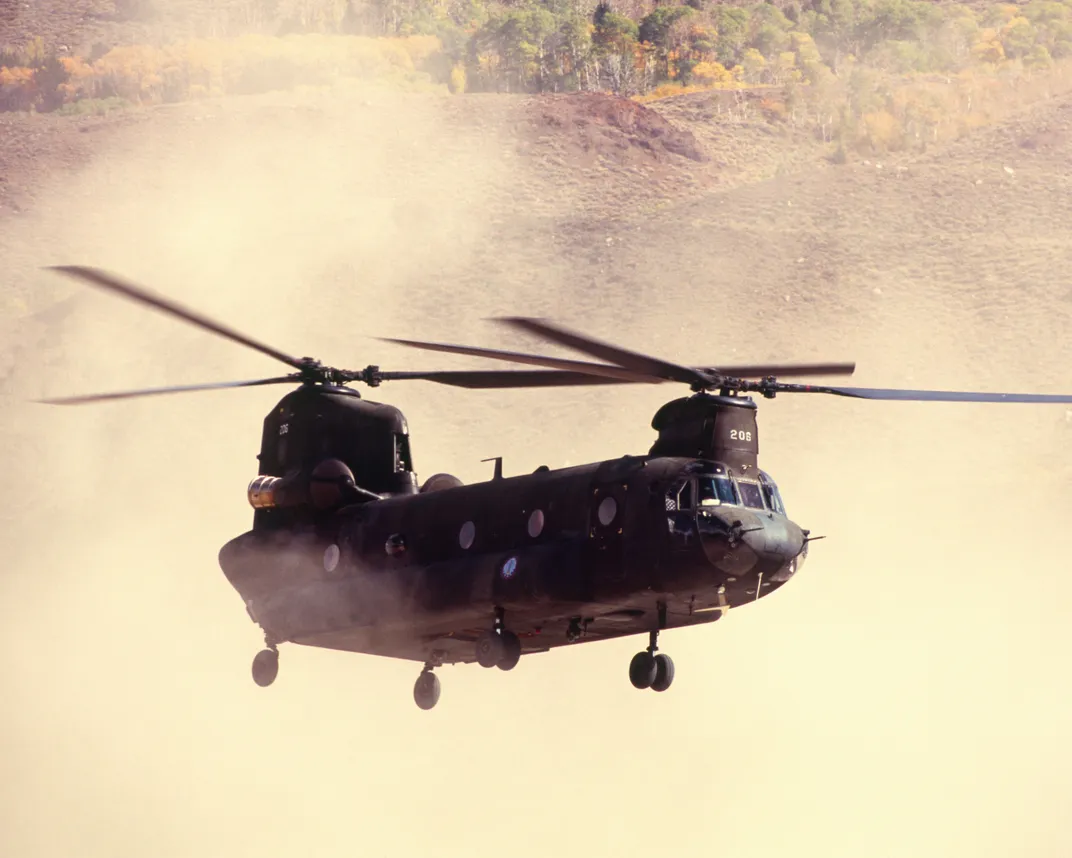
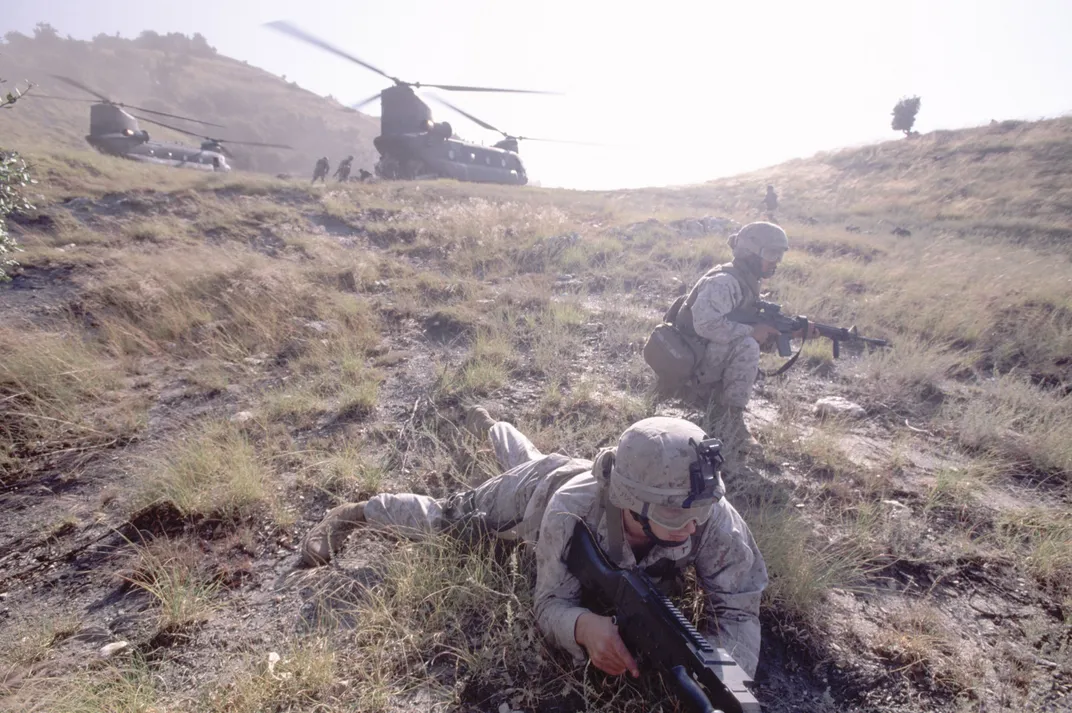
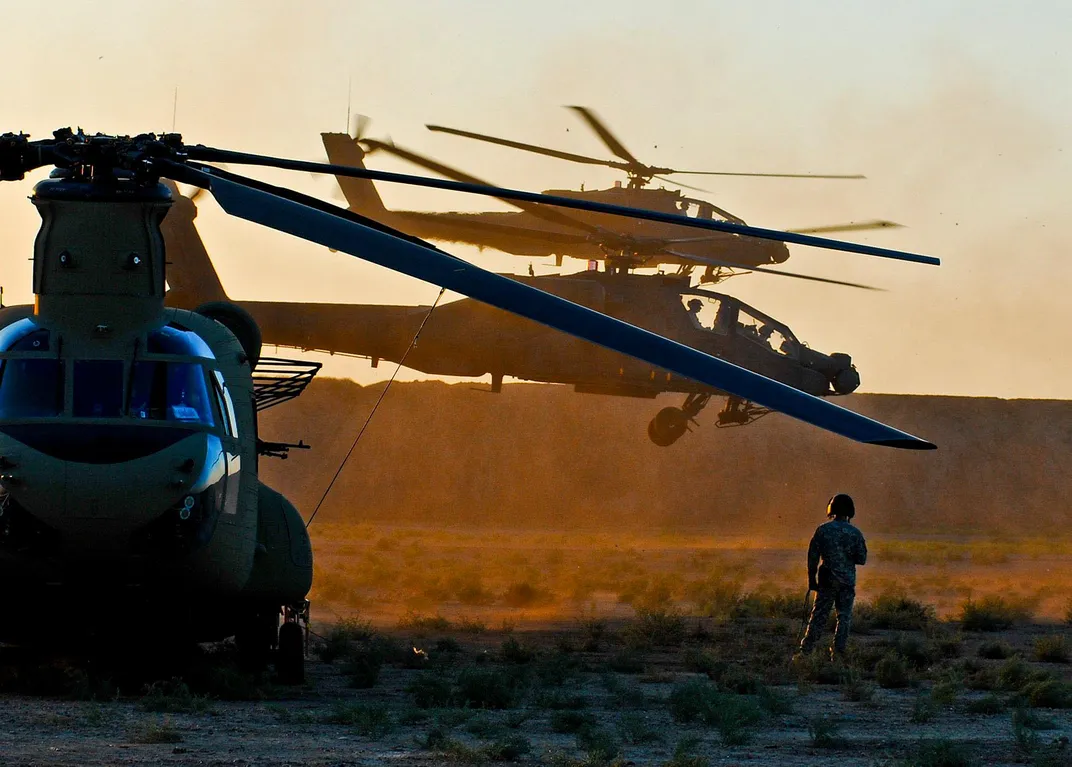
/https://tf-cmsv2-smithsonianmag-media.s3.amazonaws.com/accounts/headshot/ED_DARACK.jpg)